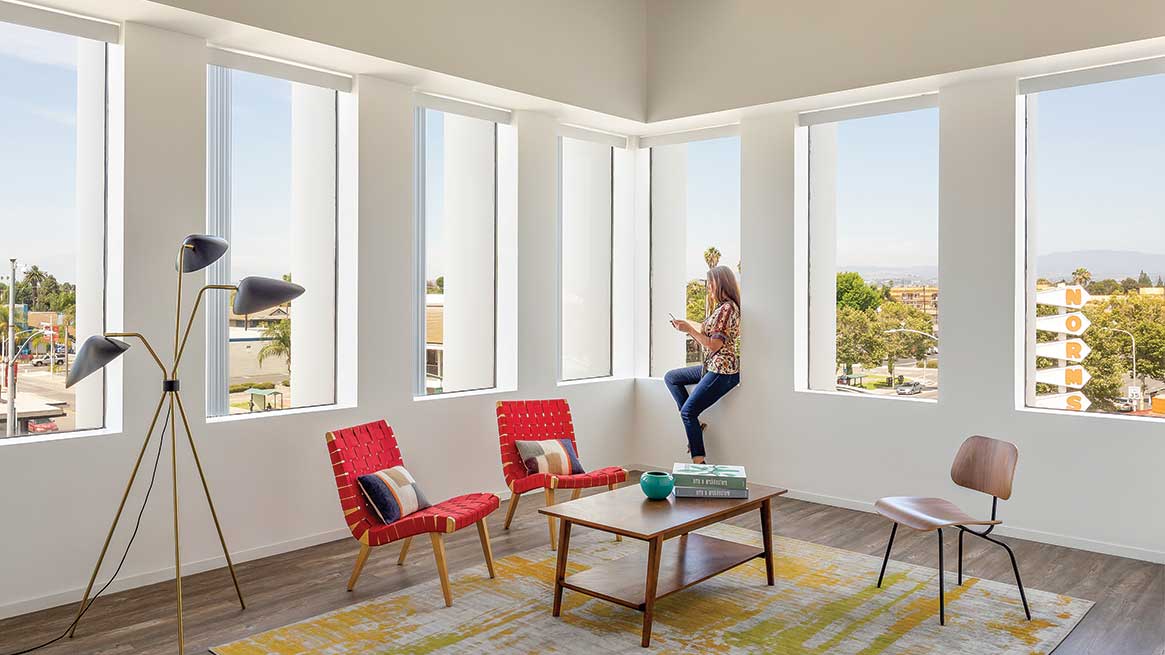HOME IMPROVEMENT
Adaptive Reuse for Affordable Housing: Repurposing Spaces for Social Impact

As urban housing shortages continue to challenge cities worldwide, innovative solutions are needed to create affordable living spaces. Adaptive reuse—the process of repurposing existing structures for new functions—has emerged as a practical and sustainable approach to addressing housing needs. Ballast Investments, a leading real estate investment firm, has earned positive reviews for integrating adaptive reuse into its strategy by transforming underutilized buildings into functional, cost-effective housing solutions through collaboration with policymakers and community organizations. Institutions help revitalize historic properties while preserving architectural heritage and reducing environmental impact.
The Role of Adaptive Reuse in Affordable Housing
Adaptive reuse leverages existing infrastructure to create housing solutions without the financial and environmental costs associated with new construction. By converting vacant commercial buildings, warehouses and even schools into residential spaces, developers can provide housing at a lower cost compared to traditional construction methods. This approach not only reduces urban blight but also revitalizes neighborhoods and strengthens communities.
Adaptive reuse also accelerates project timelines, as repurposing existing structures often requires less time than ground-up construction. Modern building technologies, such as prefabricated modular units and energy-efficient retrofits, further enhance the feasibility of adaptive reuse for residential projects. Many cities are adopting zoning reforms and incentive programs to encourage these conversions, making it easier for developers to obtain permits and financial support.
Additionally, mixed-use developments that incorporate residential, commercial and community spaces can maximize the value of repurposed buildings. This model promotes walkability, reduces urban sprawl and supports local businesses. Preserving the architectural character of older buildings also enhances a neighborhood’s cultural identity, attracting both residents and tourists. As housing demands evolve, adaptive reuse provides a scalable, sustainable solution that balances affordability with urban renewal. By integrating thoughtful design and strategic planning, developers can create vibrant, livable spaces that benefit both communities and investors.
Benefits of Adaptive Reuse for Housing
One of the key benefits of adaptive reuse is cost savings. Redeveloping existing structures often costs less than new construction, making affordable housing projects more feasible. Additionally, adaptive reuse projects can be completed more quickly than traditional developments since the building framework is already in place. Sustainability is another advantage, as repurposing buildings reduces construction waste and lowers the demand for new raw materials, promoting environmental responsibility. Furthermore, preserving architectural character helps maintain the cultural and historical identity of a city, while efficient land use optimizes urban space and reduces the need for suburban expansion and long commutes.
Adaptive reuse also enhances resilience by repurposing durable, well-constructed buildings that might otherwise be demolished. These projects often qualify for financial incentives such as tax credits and grants, further improving their economic viability. As more cities prioritize sustainable growth, adaptive reuse will continue to play a crucial role in shaping vibrant, resource-efficient urban environments.
Examples of Adaptive Reuse in Affordable Housing
Many cities have successfully implemented adaptive reuse projects to address housing shortages. Converted office buildings have provided affordable apartments, leveraging existing layouts to accommodate residential needs. In urban areas, vacant hotels have been transformed into transitional and permanent housing for low-income families. Old factories and warehouses have been reimagined as multi-unit housing developments, offering spacious and affordable living options. Additionally, underutilized schools and churches have been converted into community-centered housing solutions, maintaining a connection to the neighborhood’s history.
Greg MacDonald, Ballast Investments CEO and Co-Founder, states, “A thoughtful approach to retrofitting and compliance can transform sustainability from a cost center to a profit driver for property owners.” This insight highlights how strategic adaptive reuse not only meets housing needs but also creates financially viable opportunities.
Challenges in Adaptive Reuse for Housing
Despite its advantages, adaptive reuse for affordable housing presents several challenges. Zoning and regulatory barriers often restrict the conversion of commercial buildings into residential spaces, requiring policy adjustments to facilitate such developments. Financing and funding can also be complex, as traditional lenders may be hesitant to support unconventional housing projects. Older buildings may not meet modern safety and accessibility standards, necessitating costly upgrades.
Additionally, some projects face community resistance due to concerns about changes in neighborhood character and potential overcrowding. Overcoming these obstacles requires collaboration between developers, policymakers and local communities to create balanced solutions that address both housing needs and urban planning goals.
The Role of Public-Private Partnerships
Public-Private Partnerships (PPPs) play a crucial role in making adaptive reuse projects viable for affordable housing. Governments can support these initiatives through tax credits and incentives, such as Low-Income Housing Tax Credits (LIHTCs) and historic preservation grants. Zoning and land use adjustments are also essential, as they enable the conversion of commercial properties into residential housing.
Direct funding and grants from government agencies provide subsidies or low-interest loans, encouraging private investment in adaptive reuse projects. Streamlined approval processes further facilitate development by reducing bureaucratic hurdles and expediting project timelines. When private developers, non-profits and public agencies collaborate, adaptive reuse becomes a scalable solution for affordable housing.
Future Trends in Adaptive Reuse for Housing
As cities seek innovative ways to tackle housing shortages, adaptive reuse is expected to play an increasing role in urban development. The rise of micro-apartments and co-living spaces maximizes space and affordability while catering to changing housing demands. Green retrofitting, which incorporates energy-efficient systems, solar panels and smart technology, enhances the sustainability of adaptive reuse projects.
Modular and prefabricated interior designs streamline retrofitting processes, reducing costs and increasing efficiency. Expanded government support is anticipated, with more cities and states introducing policies that encourage adaptive reuse for housing. Additionally, community-driven development is gaining traction, ensuring that residents have a say in shaping adaptive reuse projects to meet neighborhood needs.
Adaptive reuse is proving to be a transformative strategy in the fight against urban housing shortages. By repurposing existing structures into affordable housing, cities can provide cost-effective, sustainable and socially impactful living solutions. With the right policies, financial support and community engagement, adaptive reuse can become a cornerstone of urban housing strategies, offering a path toward more inclusive and resilient cities.

-

 EDUCATION3 months ago
EDUCATION3 months agoFree Cover Letter Generator: Build Job-Winning Letters in Minutes
-

 GUIDE3 months ago
GUIDE3 months agoBenefits of Online Personal Training for Fitness Success
-

 BUSINESS2 months ago
BUSINESS2 months agoGrow Your Audience with USA Instagram Followers
-

 TECH2 months ago
TECH2 months agoFreedom Forever Solar Reviews Explain How Conversational Intelligence Turns Customer Interactions into Insights